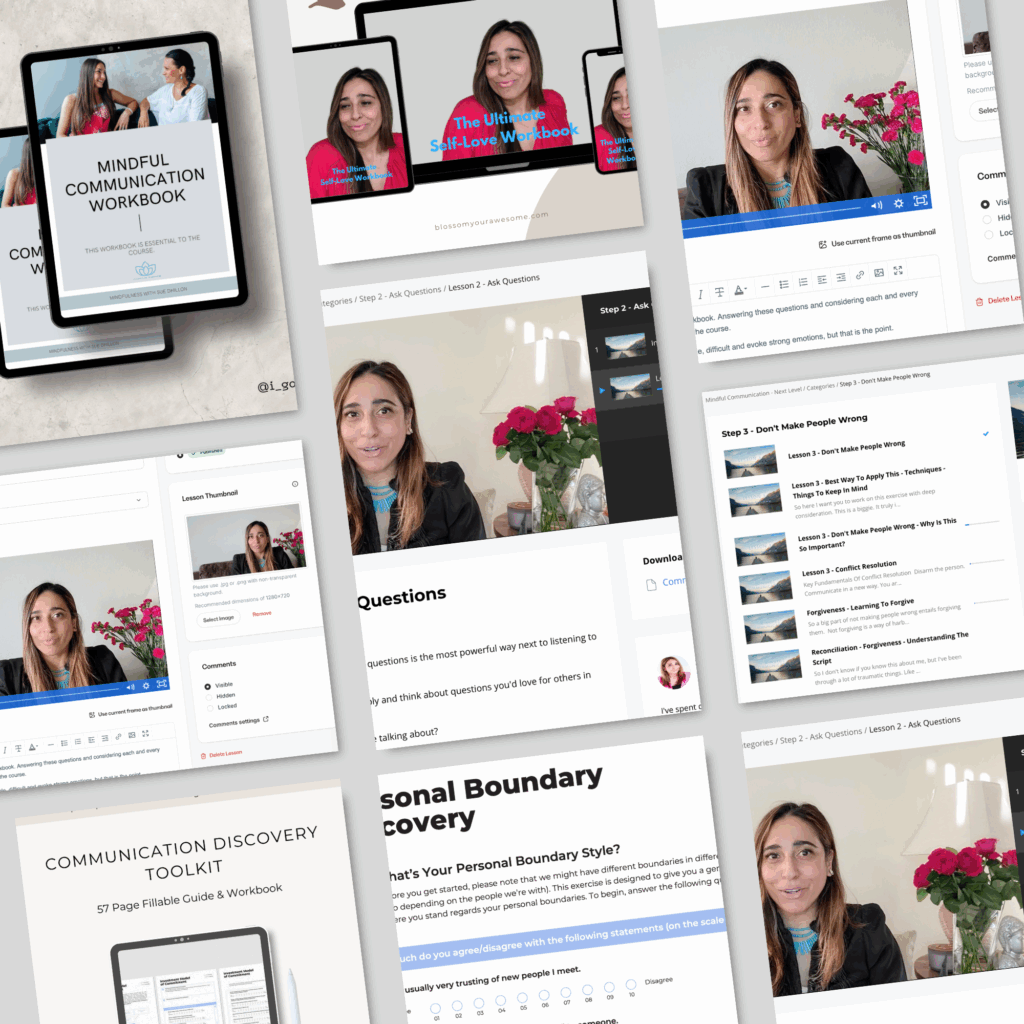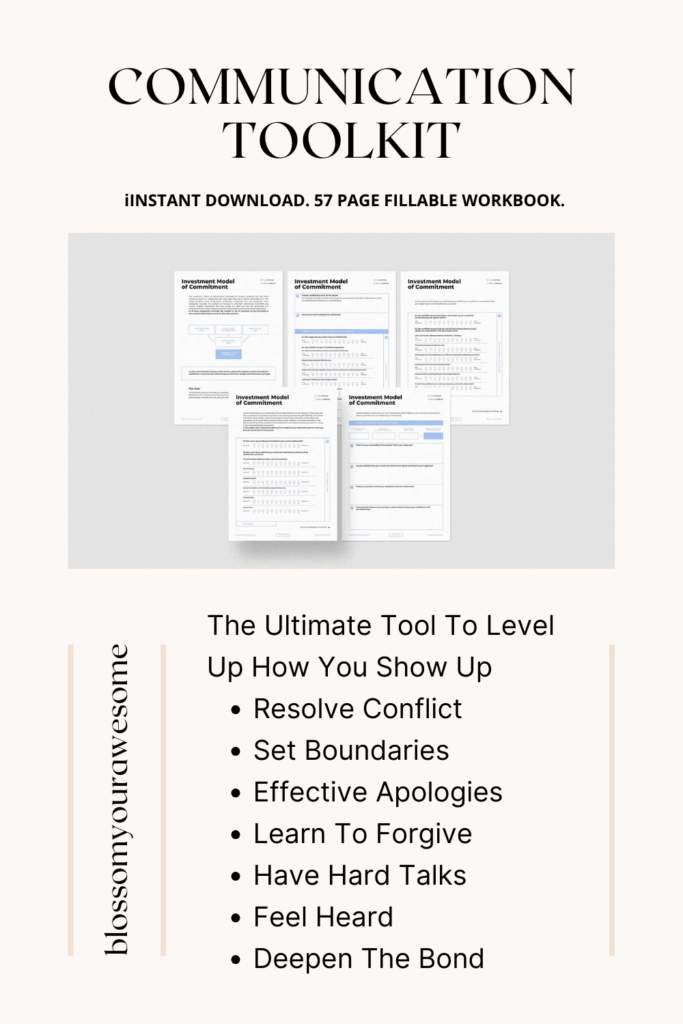We all have them, communication blindspots. Some of them may just be sabotaging your closest relationships so how can we fix them? Well let me break it down for you.

Let me ask you, have you ever walked away from a conversation feeling completely misunderstood, despite your best efforts to communicate clearly? Or found yourself in the same argument with a partner, friend, or colleague for what feels like the hundredth time? If so, you’re experiencing what I call a “communication blindspot”—patterns in how we connect with others that operate outside our awareness yet powerfully shape our relationships.
These blindspots are particularly frustrating because they persist despite our sincere intentions and conscious communication efforts. Even when we know better—even when we’ve read the books and practiced the techniques—these unconscious patterns can hijack our interactions before we even realize what’s happening.
In my years of teaching mindful communication to thousands of students, I’ve identified five particularly common blindspots that sabotage otherwise healthy relationships. Understanding these patterns is the first step toward transforming them.
Table of Contents
Communication Blindspot #1: Listening to Respond Rather Than to Understand
You’re in a conversation, and as the other person speaks, you find your mind racing ahead, formulating your response, gathering evidence for your position, or preparing your counterargument. You appear to be listening, but in reality, you’re mentally rehearsing your next lines.
This blindspot is so common that many of us don’t even recognize it as problematic—after all, isn’t conversation about the exchange of ideas? Yet this approach fundamentally alters the quality of connection possible in that moment.
The Hidden Cost
When we listen to respond, several significant losses occur:
- Missed information: We literally don’t hear crucial parts of what’s being shared
- Empathic failure: We don’t register the emotional experience behind the words
- Confirmation bias: We selectively hear only what confirms our existing position
- Diminished trust: The other person senses (correctly) that they’re not being fully heard
Perhaps most significantly, this pattern prevents the emergence of new understanding. When both people listen primarily to prepare their next point, conversation becomes a tennis match of alternating monologues rather than a genuine dialogue where new meaning can emerge.
The Mindful Shift
The alternative—listening to understand—requires a fundamental shift in intention. This means:
- Temporarily suspending your own position to genuinely enter the other’s perspective
- Noticing the impulse to formulate responses and gently returning to receptive attention
- Asking questions that emerge from curiosity rather than from strategy
- Checking your understanding before moving to your perspective (“What I hear you saying is…”)
In my Next Level Mindful Communication Masterclass we learn how to shift this through guided exercises that make this abstract concept concrete and embodied. This single shift can transform your most challenging relationships within days or even minutes of implementing it.
Blindspot #2: Emotional Leakage
You’re discussing something important with a colleague, family member, or partner. The topic feels charged, but you’re committed to staying calm and rational. Despite your best intentions, your tone becomes clipped, your responses get shorter, or your body language turns defensive. The other person reacts to these subtle cues, the interaction escalates, and suddenly you’re in a full-blown conflict that neither of you wanted.
This blindspot—what I call “emotional leakage”—occurs when unacknowledged feelings find expression through tone, pace, facial expressions, or body language, despite our attempt to communicate “normally.”
The Hidden Cost
When emotions leak rather than being mindfully acknowledged:
- Confusing double messages: Your words say one thing while your paralanguage says another
- Escalation cycles: Others react to the emotional undercurrent rather than your stated content
- Diminished authenticity: The gap between your expressed and actual experience widens
- Lost information: Critical emotional data that could resolve the situation goes unaddressed
This pattern often leaves both parties feeling confused about what actually happened, making it particularly difficult to address constructively after the fact.
The Mindful Shift
Transforming this pattern involves developing emotional literacy and ownership:
- Practicing internal recognition of emotions as they arise in conversations
- Developing language for cleanly acknowledging feelings without blame
- Learning to distinguish between the feeling itself and the story about the feeling
- Creating pauses to regain center when emotional intensity rises
Next Level Mindful Communication Course devotes an entire module to emotional fluency, providing concrete tools for transforming this common blindspot into an opportunity for deeper connection.
Blindspot #3: Assumption Projection
Your partner says something that triggers immediate irritation. Without realizing it, you’ve assumed their intention, filled in missing information with your own projections, and responded to your interpretation rather than what they actually communicated.
We all have a remarkable capacity to believe we know what others are thinking, feeling, and intending—often without confirming these assumptions. This blindspot is so pervasive that many relationship conflicts are actually arguments about unchecked assumptions rather than genuine disagreements.
Never assume.
The Hidden Cost
When we operate from unverified assumptions:
- Shadow arguments: We fight about projected meanings rather than what was actually said
- Pattern reinforcement: We continuously find evidence for our existing beliefs about others
- Defensive postures: Others sense they’re being mischaracterized and protect themselves
- Missed opportunities: Potential connection is sacrificed to assumption confirmation
Many longstanding relationship conflicts persist primarily because assumptions calcify into “truths” about the other person that go unexamined for years.
The Mindful Shift
Breaking free from assumption projection involves several key practices:
- Developing awareness of when you’ve moved from observation to interpretation
- Cultivating genuine curiosity about others’ actual experience
- Practicing assumption checking through direct, non-accusatory questions
- Noticing and naming your own projection tendencies
In the Next Level Mindful Communication Masterclass, we demonstrate how combining specific language patterns with internal awareness creates immediate shifts in even the most entrenched relationship dynamics.
Blindspot #4: Conversational Narcissism
You’re catching up with a friend who starts sharing something important to them. As you listen, you notice a relevant experience from your own life. When they pause, you share your experience… and then another… until you realize the conversation has completely shifted from their topic to yours.
This blindspot—which researcher Charles Derber named “conversational narcissism”—reflects our natural but problematic tendency to redirect dialogue toward our own experiences, perspectives, and concerns. It happens so smoothly that we rarely notice we’ve done it until reflection afterward, if at all.
The Hidden Cost
When conversations consistently shift toward one person’s experience:
- Imbalanced disclosure: One person shares more vulnerably than the other
- Empathic failure: Opportunities for meaningful support are missed
- Connection erosion: The relationship gradually becomes one-sided
- Limited perspective taking: The pattern reinforces self-centeredness over time
This blindspot proves particularly challenging because sharing personal experiences feels like connection-building, making it difficult to recognize when it’s actually diminishing relationship depth.
The Mindful Shift
Transforming conversational narcissism involves both awareness and skill development:
- Noticing the impulse to share your experience before fully exploring theirs
- Asking follow-up questions that deepen their sharing rather than redirect
- Consciously balancing the conversational focus over time
- Distinguishing between supportive and competitive self-disclosure
Students in my Next Level Mindful Communication Course learn specific techniques for maintaining awareness of conversational balance while still authentically sharing their own experience—a skill that transforms both personal and professional relationships.
Blindspot #5: Conflict Avoidance as Resolution
You sense tension building in an important relationship. Rather than addressing it directly, you back away from the triggering topic, manage your own reactions, and hope the issue resolves itself. Temporarily, the approach works—the immediate discomfort dissipates. But over time, the unaddressed issues accumulate, creating a growing sense of distance and resentment.
This blindspot—mistaking conflict avoidance for conflict resolution—reflects our natural tendency to prioritize short-term comfort over long-term relationship health. It’s particularly common among those who pride themselves on being peaceful, reasonable, and non-confrontational.
The Hidden Cost
When we consistently avoid necessary conflict:
- Accumulated tension: Unaddressed issues compound over time
- Emotional distance: Authentic connection becomes impossible amid unspoken concerns
- Periodic explosions: The buildup eventually leads to disproportionate reactions
- Diminished intimacy: The relationship loses its capacity for genuine closeness
Perhaps most ironically, this conflict-avoidant pattern often creates exactly what it attempts to prevent: relationship breakdown through growing disconnection.
The Mindful Shift
Transforming this pattern involves developing both internal capacity and external skills:
- Distinguishing between productive and unproductive conflict
- Building tolerance for the discomfort of addressing difficult issues
- Learning frameworks for initiating necessary conversations
- Developing skills for staying present during emotional intensity
The Next Level Mindful Communication Free Training introduces foundational practices for this transformation, while the complete course provides comprehensive tools for navigating even the most challenging relationship tensions with clarity and compassion.
Moving From Blindspot to Insight
These five patterns—listening to respond, emotional leakage, assumption projection, conversational narcissism, and conflict avoidance—operate largely outside our awareness until we develop specific attention practices that make them visible. Once we learn to see them they become powerful opportunities for relationship transformation.
The good news? These blindspots aren’t character flaws or signs of bad intentions. They’re simply unconscious patterns that developed naturally through your life experiences and the communication models you’ve been exposed to. With awareness and practice, they can shift remarkably quickly.
Why Techniques Alone Aren’t Enough
If you’ve tried implementing communication techniques without lasting success, you’re not alone. While tactical approaches can be helpful, they often fail because:
- They don’t address the underlying awareness gaps that create blindspots
- They require conscious implementation, which falters under emotional pressure
- They focus on external behavior without addressing internal patterns
- They offer generic solutions to specific relationship dynamics
Authentic communication transformation requires an approach that integrates inner awareness practices with outer skill development—precisely the methodology I’ve developed in the Next Level Mindful Communication Course.
Experience the Difference: Free Mindful Communication Training
After teaching these principles to countless students, I’ve distilled the most transformative elements into a free training that offers immediate shifts in how you experience your most important relationships.
In this 60-minute interactive session, you’ll:
- Identify your primary communication blindspots through a revealing self-assessment
- Learn a powerful centering practice that prevents reactive communication
- Discover the three-part framework for transforming any difficult conversation
- Experience a guided practice that immediately enhances your listening capacity
- Receive concrete next steps for applying these principles in your specific relationships immediately
Students consistently report experiencing significant shifts in their relationships within days or even within moments of applying these foundational principles—even in long-standing patterns they had previously considered unchangeable.

Click here to register for the free Next Level Communication Training
The skills of mindful communication aren’t luxuries in today’s complex world—they’re necessities for maintaining meaningful connection amidst the challenges we all face. Whether you’re navigating partnership tensions, family dynamics, workplace relationships, or your own internal dialogue, these practices offer a pathway to greater clarity, compassion, and authentic expression.
Join my community of students who have transformed their communication patterns from unconscious habits to mindful choices, creating relationships characterized by understanding, depth, and genuine connection.
A Great Communication Resource
For something fast, quick and easy – Grab The Communication Discovery Toolkit – one of the best ways to start working on your communication skills.

What communication blindspot resonates most strongly with your experience? Share in the comments below, or ask questions about how mindful approaches might address your specific communication challenges.
Comments +
5 Communication Blindspots And How to Fix Them
Self Improvement